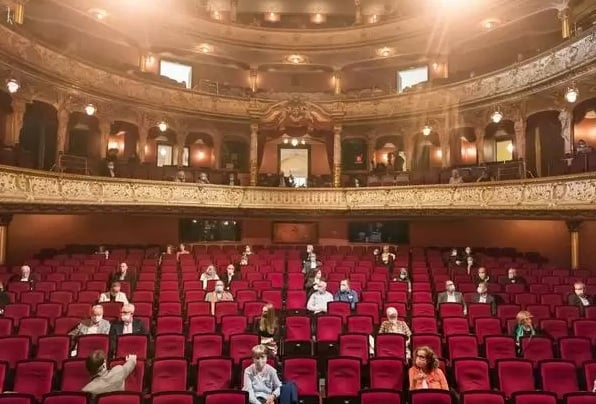
Can missing audiences be brought back to their seats?
Missing audiences present major challenge to arts income
New research suggests venues may not be able to convince up to 14% of regular attendees to return as restrictions lapse. How can organisations adapt?
Up to 14% of regular arts attendees may not return to venues until Covid-19 is history.
New research from the Insights Alliance of Indigo, Baker Richards and One Further found a desire to avoid crowds and fears that other attendees won't follow Covid safety protocols are behind the loss of this proportion of audiences and, crucially, the income they contribute.
While there are other considerations – half of those yet to return say there hasn't been anything they want to see – crowds and compliance were the top two drivers among the hold outs, "and there's really not much you can do about that", Baker Richards' Deputy CEO David Reece said.
READ MORE:
- Living with Covid plan could erase 'significant minority' of audiences
- Distanced performances 'crucial' to retaining audiences
Indigo Partner Katy Raines argued it was perhaps time to let those audiences go.
"We're going to have to prove we're diversifying our audiences," she said.
"Continually obsessing about that 14% who haven't come back could divert us from some very exciting and necessary opportunities to build a new audience that [are] going to take three to five, if not 10 years."
Of the 23,369 people surveyed, 86% had returned to live arts or had tickets to do so, but 30% expected to attend less often over the coming year.
And 48% were less interested in online cultural events now than at the beginning of the pandemic.
However, about half said they had missed the "buzz" of live events (54%) and that they liked supporting their local venue (45%).
"This has been really consistent since way back at the start of the pandemic… there may be opportunities to tap into that support," Reece commented.
Retaining vs reactivation
Reece suggested five tactics to help organisations compensate for the missing audiences: attracting new customers, retaining old ones, reactivating lapsed patrons, increasing visitor frequency, and growing the party size by appealing to the social aspect of cultural outings.
Each could increase organisations' takings by between 2% and 7%, he said.
But attracting new customers is five times as expensive as retaining existing ones, and reactivation too is a costly exercise that rarely offers value for money.
Encouraging larger group visits may also prove challenging as people adjust to life after Covid.
Reece said advertising needs to be more targeted: "Half of people aren't coming back because of programming, not because of Covid."
"It's worthwhile revisiting the schemes you have in place around multi-buy frequency incentives to see if there's scope for someone who's coming once to come twice, someone who's coming twice to come three times."
Assessing risk
People consider attending a live cultural event less risky than going to a sports match but riskier than indoor dining or visiting friends.
Raines said this finding showed the sector's messaging is getting through: "We have done a fantastic job showing people how safe theatre is."
Even among returnees, there is still a strong desire for masks and lower capacity events – nearly half said it would make them more likely to attend.
"Although there isn't a legal requirement to enforce these things, the data would suggest that our best change at getting audiences back is to hold on to at least some of them for a while," Raines added.
She said organisations are "in trouble" if the 14% of audiences they're missing were the group contributing most of their income.
"It would be worth trying to do a bit of digging in your databases to find out what is the value of those people who are not coming back before you take any rash decisions."
Join the Discussion
You must be logged in to post a comment.